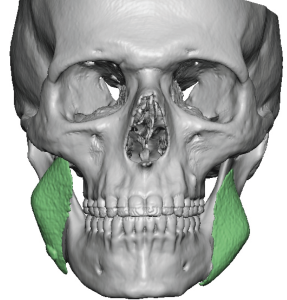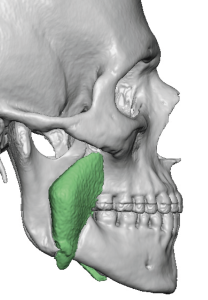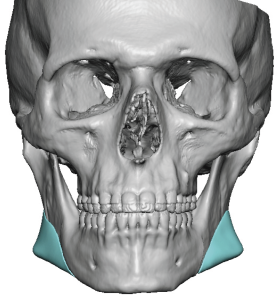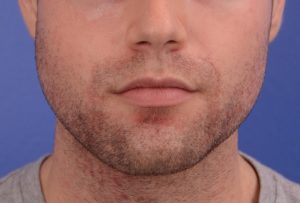Background: Chin implants are the original form of permanent facial augmentation and are still the most commonly performed aesthetic implant today. But chin implants only cause an incomplete jaw augmentation effect. The jaw angles behind the chin on both sides provide a fertile area for additional aesthetic augmentations for a different type of jaw enhancement. Or combined with a chin implant to have a more complete jaw augmentation.
As a result jaw angle implants have been available as a standard type of facial implant since the 1990s. But they were never very popular after their inception probably due to lack of patient demand with low appreciation for the benefits of posterior jaw angle augmentation. The other reason jaw angle implants, until recently, have never achieved surgical popularity is the difficulty in their surgical placement.
Placed through an intraoral approach way back in the posterior vestibule, the implant pocket needs to be developed under the thick and strong masseter muscle. Getting the working end of a jaw angle implant back along the posterior and inferior ramus border is also complicated by the tight ligamentous attachments of the muscle which happen to attach exactly where the implant needs to be. The difficulties of the anatomy combined with the need for bilateral implant placements makes postoperative complications with their use the highest amongst all facial implants.

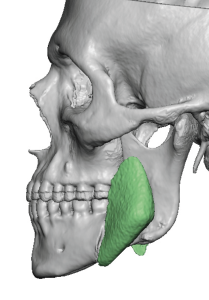



This case shows some of the classic positioning errors that can occur in performing jaw angle implant surgery…in an extreme form. It is very easy to under estimate how far back the posterior border of the jaw angles are. It is not as easy as making an incision, developing a quick pocket and simply stuffing the implants into the limited pocket. This results shows how inexperienced the surgeon must have been with the procedure…it likely was the first time it had been performed.
Jaw angle implants requite a lot of experience to learn the nuances of how to achieve proper positioning over the jaw angles. This becomes even more paramount when doing implant exchanges as the anatomy is now scarred and bone overgrowths have occurred. A custom implant is certainly beneficial but an inability to get the implants into proper position will still result in an aesthetic failure.
Key Points:
1) Jaw angle implants are the most challenging of all facial implants to intraoperatively place.
2) Anterior and superior malpositioning is the most common location of improperly placed jaw angle implants.
3) Custom designed jaw angle implants are often the choice to replace malpositioned standard implants.
Dr. Barry Eppley
World-Renowned Plastic Surgeon



